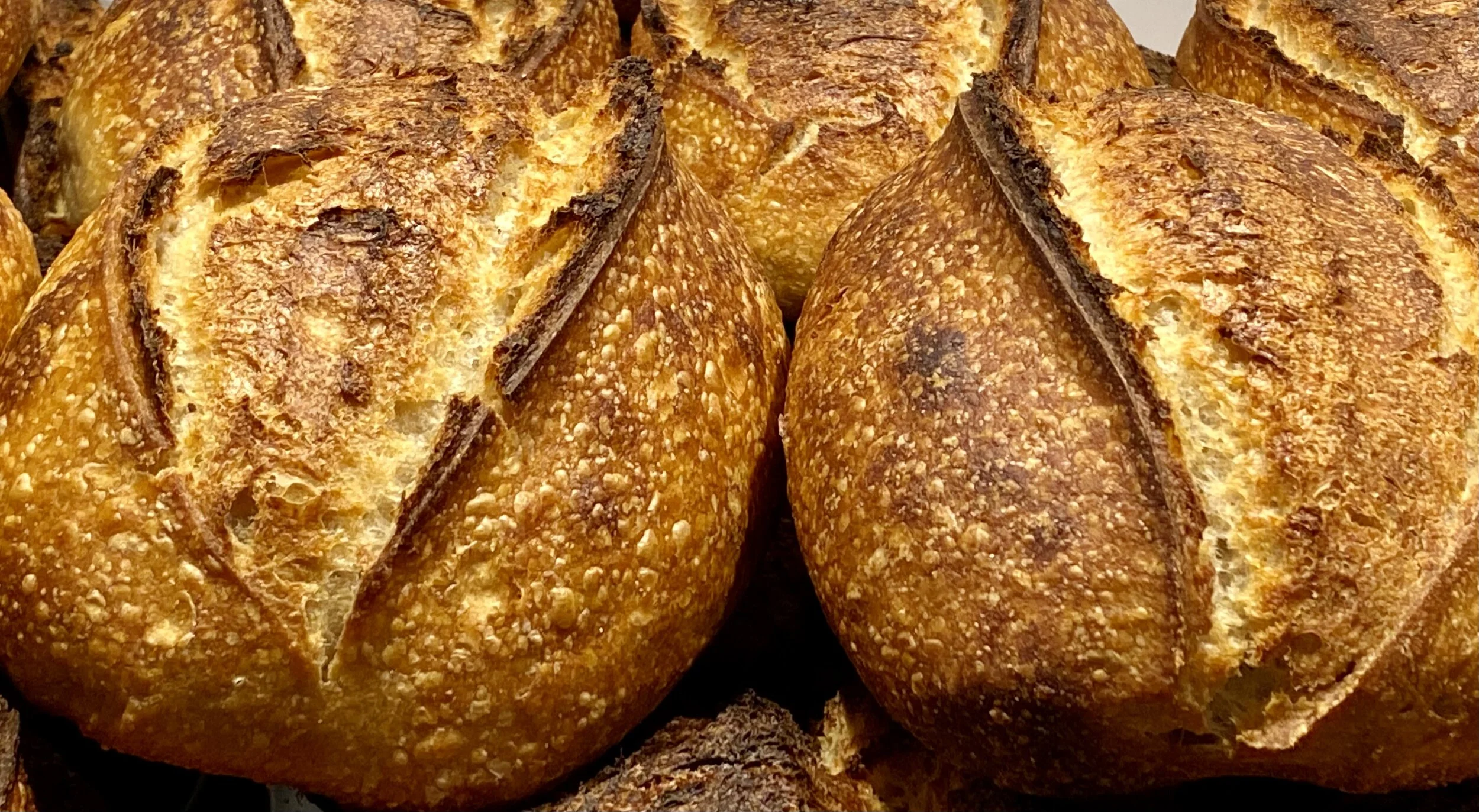Our Bread
Bread can sustain life. Just three ingredients: flour, water, salt.
We feel and believe that the best bread is baked in accordance to the following ideas and principles.
1. Whole, Real, Simple Ingredients
We aspire to bake with as much whole freshly milled flour as we can. We do this because using the best ingredients makes tastier, healthier, more nutritious bread. The flavour benefits alone, make it worth it. Bread is, after all, a delicious part of our cuisine. But when one starts to realize the nutrient differences with whole, fresh, local grain, it makes the decision a no-brainer. The core recipe is the same as any other old-world artisanal naturally leavened bread: water, flour, salt. Add in the right amount of time, and what you get in the end is an amazing loaf of bread. It starts with the best and most sustainable ingredients. All good food does.
2. Natural Fermentation Process (Sourdough without commercial yeast)
Making good bread takes using the best processes and methods. We bake exclusively with wild yeast (sourdough) and our levain is always a “young” levain (not as sour). When a baker(y) chooses not to use commercial yeast, it does so for several reasons: First, the bread simply tastes better. Second, the long and natural fermentation produces a more nutritious loaf, by beginning to unlock the most nutritious parts of the wheat. Third, it makes the bread much more digestible. We believe that much of the bad rap that bread received during the height of the gluten-free craze was as result of baking bread in an industrial fashion. Many people who report intolerance towards wheat bread find this bread entirely compatible with their digestion. The bacteria and yeast start breaking down various components of the flour (starches and proteins mostly) thereby beginning the digestive process on your behalf.
3. Water
Ever tried cooking a cup of rice with half a cup of water? It does not work. Grains deserve to be handled and cooked properly and that requires a proper amount of hydration. Over the years, mostly because wet dough is difficult to handle in industrial mass production bakeries (think machine dividers and shapers), bakers moved towards more manageable dough, by reducing the amount of water, creating a stiffer and less sticky dough. And while this was amazing for production times (just like the advent of commercial yeast), it has contributed to a bread that is less moist, and, frankly, is producing a bread that has not been handled in a nutritious, digestible, and delicious way. A properly hydrated dough leads to a soft, supple, and tasty loaf.
4. Time
Can you see where this is going? Time, like water and yeast, was adjusted to fit our detached, cheap, mass production scales. The addition of commercial yeast and less wet dough, cut proofing times, and thereby bypassed proper fermentation. This fermentation, like the yeasts, bacteria, and water, lead to a tastier, more nutritious, softer, and more digestible loaf of bread. For the record, just in case your curious, an average loaf of bread created in the ways we’ve described here, takes over 24 hours and frequently approaches 36 hours, from building the levain to coming out of the oven. The bread is allowed to develop flavour and depth in a way that simply cannot happen otherwise.
5. Temperature
We bake our loaves dark. Darker than most are used to. Why? Because you can’t rush this part of the process either. It’s where all the hard work before pays off and get’s transformed and properly cooked. The flavours from a well-baked loaf of bread should be put up against any other and then let the taste buds, mouth feel, and smell do all the work. So, when a loaf goes into the oven, it is the moment of truth - did we make the right decisions over the last 48 hours? And so begins the waiting game for that loaf to complete its transformation. Regardless, we bake each loaf till it's crust is dark and substantial and its insides are fully cooked. People who are unfamiliar with this artisanal approach occasionally point out that the bread is burned. We freely agree that they may look that way comparatively speaking, compared to most bakeries. But we stand by the benefits to taste, texture, and smell.


